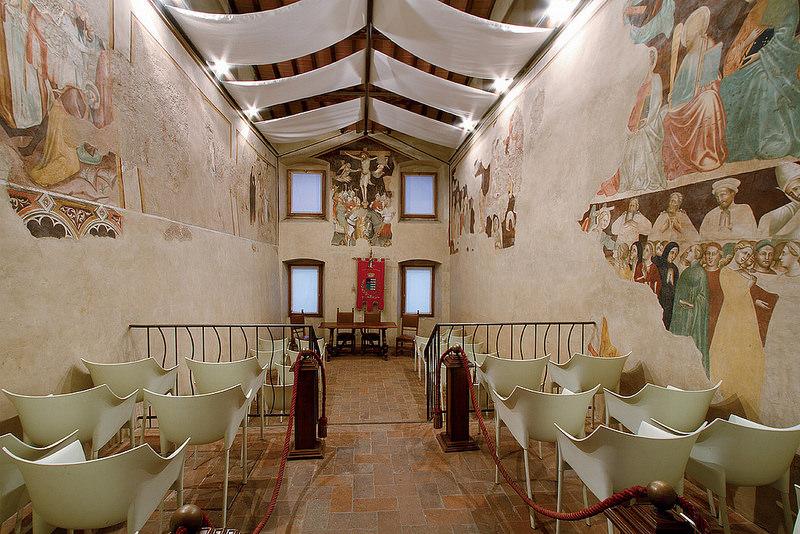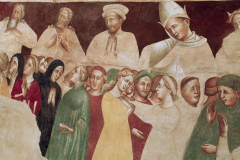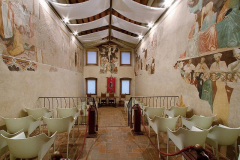
The oratory is a masterpiece realized at the end of the XIV century. The local people named it ‘House of pictures’, because of the remains of some wall paintings. After the 1789, the bishop of Pistoia, Scipione de’ Ricci, ordered that many churches and oratories were abolished. So, the oratory became a private house: it was divided into two floors and the wall paintings were put under the plaster. It was hidden until the end of the 1980s, when some sacred images re-emerged thanks to some renovation works.
Today the entire building constitutes an evocative museum and representative place. The restoration has brought to light an interesting and fragmentary cycle of frescoes. On the back wall there are the remains of a polyptych with Madonna and Jesus taken down from the cross, surrounded by angels and flanked by saints who unfortunately are no longer visible. In the upper register you can instead admire the Crucifixion with the Jews. We see the Last Judgment on the right wall and the Passion of Christ on the left one, while sketch of the sinopia with the ‘Dormitio Virginis’ and the Ascension of Mary to Heaven, which gave the building its name, is on the counter-facade.
The Last Judgment presents a monumental scene divided into three registers: the lower one illustrates the damned souls under the control of the archangel Gabriel, who holds a sword, and the Blessed, unfortunately missing today. In the middle register we can admire the Apostles with the scrolls and their symbols in their hands. The upper register presents Madonna as a Merciful Mother with Jesus preceded by flying angels, who bear the symbols of the Passion. These are figures of high quality and evocative charm, probably painted by Sano di Giorgio, Master of Bracciolini Chapel in Pistoia.





